Showing Spotlights 89 - 96 of 201 in category All (newest first):
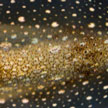 Proton-conducting materials have become important for a wide range of technologies, such as fuel cells, batteries, and biosensors. A great deal of research has been devoted to developing improved and application-specific proton conducting materials. Researchers even developed a proton-based transistor that could let machines communicate with living things. Scientists now have discovered and characterized novel electrical properties for the cephalopod structural protein reflectin.
Proton-conducting materials have become important for a wide range of technologies, such as fuel cells, batteries, and biosensors. A great deal of research has been devoted to developing improved and application-specific proton conducting materials. Researchers even developed a proton-based transistor that could let machines communicate with living things. Scientists now have discovered and characterized novel electrical properties for the cephalopod structural protein reflectin.
Jun 11th, 2014
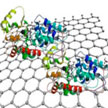 Studies have shown that in a favorable nano environment, enzyme immobilization onto nanosupports could lead to increased enzyme stability and improved specificity, and could allow for prolonged enzyme functionality through chemical and physical treatment. Researchers also have shown that immobilization onto carbon-based nanosupports can increase the enzyme turnover and allow for prolonged enzyme-based conjugates isolation and usage. In new work, researchers have now taken another step towards the detailed characterization and optimization of enzyme-nanosupport interface reactions.
Studies have shown that in a favorable nano environment, enzyme immobilization onto nanosupports could lead to increased enzyme stability and improved specificity, and could allow for prolonged enzyme functionality through chemical and physical treatment. Researchers also have shown that immobilization onto carbon-based nanosupports can increase the enzyme turnover and allow for prolonged enzyme-based conjugates isolation and usage. In new work, researchers have now taken another step towards the detailed characterization and optimization of enzyme-nanosupport interface reactions.
May 14th, 2014
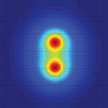 In the past decades, the Density Functional Theory (DFT) has been very successful in helping chemists and physicists understand the properties of matter at extremely small scales. Although some problems still remain in the standard implementation of DFT, it represents an important theoretical tool which is used on a daily basis. Scientists now propose a variant of the standard DFT which could pave the way towards the simulation of very complex chemical and physical systems at a quantum level.
In the past decades, the Density Functional Theory (DFT) has been very successful in helping chemists and physicists understand the properties of matter at extremely small scales. Although some problems still remain in the standard implementation of DFT, it represents an important theoretical tool which is used on a daily basis. Scientists now propose a variant of the standard DFT which could pave the way towards the simulation of very complex chemical and physical systems at a quantum level.
Apr 22nd, 2014
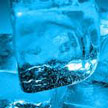 Ice accumulation is not just a cost and safety problem for the airline industry and other transportation areas, together with undesired environmental impacts. Here are some examples: Transmission lines and power network towers may deform or even collapse with the burden of excess amount of ice; ice accretion on wind turbine blades can cause a production loss as much as 50% of the annual production; frost and ice accumulation in refrigerators and heat exchangers results in a decrease of heat transfer efficiency. Therefore, great efforts have been made to understand the mechanism of icing and investigations on anti-icing and deicing have been extensively carried out. Various anti-icing and deicing methods have been developed such as for instance nanocoatings and other nanostructured surfaces.
Ice accumulation is not just a cost and safety problem for the airline industry and other transportation areas, together with undesired environmental impacts. Here are some examples: Transmission lines and power network towers may deform or even collapse with the burden of excess amount of ice; ice accretion on wind turbine blades can cause a production loss as much as 50% of the annual production; frost and ice accumulation in refrigerators and heat exchangers results in a decrease of heat transfer efficiency. Therefore, great efforts have been made to understand the mechanism of icing and investigations on anti-icing and deicing have been extensively carried out. Various anti-icing and deicing methods have been developed such as for instance nanocoatings and other nanostructured surfaces.
Mar 18th, 2014
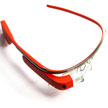 The integration of consumer electronics with advanced imaging and analytical platforms holds great promises for medical point-of-care diagnostics and environmental rapid field testing for pollutants and viruses. A recent example is a Google Glass application and a server platform for instant, wireless diagnostic testing of a variety of health conditions and diseases. This technology allows Google Glass wearers to use the hands-free camera on the device to send images of diagnostic tests that screen for conditions such as HIV or prostate cancer.
The integration of consumer electronics with advanced imaging and analytical platforms holds great promises for medical point-of-care diagnostics and environmental rapid field testing for pollutants and viruses. A recent example is a Google Glass application and a server platform for instant, wireless diagnostic testing of a variety of health conditions and diseases. This technology allows Google Glass wearers to use the hands-free camera on the device to send images of diagnostic tests that screen for conditions such as HIV or prostate cancer.
Mar 4th, 2014
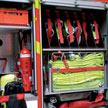 In the area of development cooperation which, like disaster relief, is often confronted with demands and scenarios that are hard to predict, nanotechnology based solutions can offer interesting perspectives for medical care, water treatment, agriculture and food, as well as rural infrastructure development in developing countries. A publication aims to inform managers and staff working in emergency response services and development cooperation as well as related institutions about the innovation potential of nanotechnology for their respective fields of work, and to highlight areas of overlap. The 84-page brochure also addresses companies and industry representatives that are already operating in this area or are interested in tapping in to this market.
In the area of development cooperation which, like disaster relief, is often confronted with demands and scenarios that are hard to predict, nanotechnology based solutions can offer interesting perspectives for medical care, water treatment, agriculture and food, as well as rural infrastructure development in developing countries. A publication aims to inform managers and staff working in emergency response services and development cooperation as well as related institutions about the innovation potential of nanotechnology for their respective fields of work, and to highlight areas of overlap. The 84-page brochure also addresses companies and industry representatives that are already operating in this area or are interested in tapping in to this market.
Jan 6th, 2014
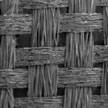 Here are the 10 most popular Nanowerk Nanotechnology Spotlight articles of 2013. This year, the list includes nanotechnology in sports equipment, nanogenerators for energy harvesting, electronic skin, stealth coatings, green battery components, wearable textile batteries, two-dimensional materials beyond graphene, medical microrobots for drug delivery, chips inside cells to feel the pressure, and a list of graphene manufcaturers.
Here are the 10 most popular Nanowerk Nanotechnology Spotlight articles of 2013. This year, the list includes nanotechnology in sports equipment, nanogenerators for energy harvesting, electronic skin, stealth coatings, green battery components, wearable textile batteries, two-dimensional materials beyond graphene, medical microrobots for drug delivery, chips inside cells to feel the pressure, and a list of graphene manufcaturers.
Jan 3rd, 2014
 Friction is present in numerous physical phenomena occurring at all length scale. About 1/3 of the world's primary energy is dissipated in mechanical friction and 80% of machinery components' failure is caused by wear. Friction and wear will also become bottlenecks for micro-/nano-mechanical systems (MEMS and NEMS) featured with sliding components. Superlubricity, a phenomenon where the friction almost vanishes between two solid surfaces, will be the key to solve these problems and researchers now report a breakthrough in macroscale superlubricity.
Friction is present in numerous physical phenomena occurring at all length scale. About 1/3 of the world's primary energy is dissipated in mechanical friction and 80% of machinery components' failure is caused by wear. Friction and wear will also become bottlenecks for micro-/nano-mechanical systems (MEMS and NEMS) featured with sliding components. Superlubricity, a phenomenon where the friction almost vanishes between two solid surfaces, will be the key to solve these problems and researchers now report a breakthrough in macroscale superlubricity.
Nov 7th, 2013
 Proton-conducting materials have become important for a wide range of technologies, such as fuel cells, batteries, and biosensors. A great deal of research has been devoted to developing improved and application-specific proton conducting materials. Researchers even developed a proton-based transistor that could let machines communicate with living things. Scientists now have discovered and characterized novel electrical properties for the cephalopod structural protein reflectin.
Proton-conducting materials have become important for a wide range of technologies, such as fuel cells, batteries, and biosensors. A great deal of research has been devoted to developing improved and application-specific proton conducting materials. Researchers even developed a proton-based transistor that could let machines communicate with living things. Scientists now have discovered and characterized novel electrical properties for the cephalopod structural protein reflectin.
 Subscribe to our Nanotechnology Spotlight feed
Subscribe to our Nanotechnology Spotlight feed





